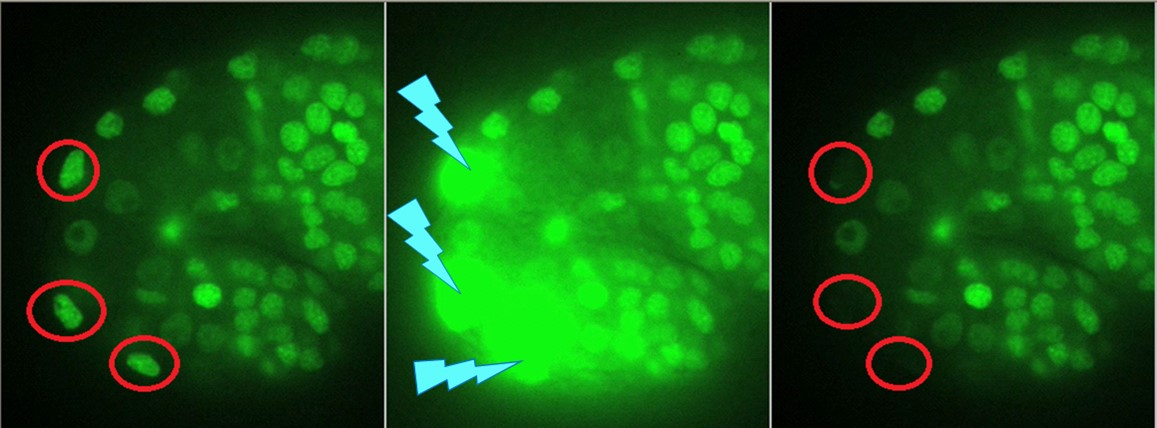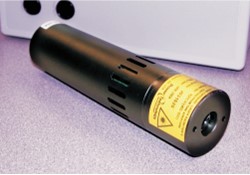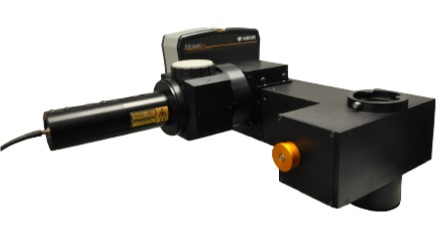Resources
 Part of the Oxford Instruments Group
Part of the Oxford Instruments Group
Expand
Collapse
 Part of the Oxford Instruments Group
Part of the Oxford Instruments Group
The Andor Mosaic® high performance laser diode modules (SSL-HP) have been created specifically to address the needs of high-end applications requiring superior optical quality, ultra-stable wavelengths and output powers. Applications are focused on fluorescence microscopy and, in particular, photostimulation, where the patented Andor Mosaic® has enabled and even led many important experimental innovations and advances using optogenetic techniques. Mosaic® is a DMD (digital micromirror device) based instrument allowing injection of arbitrarily patterned illumination into the specimen plane of an optical microscope. A unique feature of this device is the ability to align illumination patterns with targeted features in a photosensitive specimen. Applications include optogenetics, bleaching, photoactivation and photoconversion and targeted illumination for optical fluorimetry.

Figure 1. GFP-expressing embryo, showing before, during and after photobleaching of three simultaneously targeted cell nuclei. Targeted bleaching with Andorw Mosaic and 8200-SSL-HP 405 nm laser module.
The laser diode modules promote stability of wavelength and output, this is achieved with a precision current source and PID temperature control loop. The new, improved SSL-HP series provides even more stability via several optical and mechanical improvements, operating over a wider temperature range. The modules are more efficient, with higher reliability and typical lifetime of 5000-10,000 hours.
| Specifications | MM-8200-SSL-HP & 445 |
| Operating Voltage (VDC) - 5V Optimum | 5-15 |
| Operating Temp. Range (C) | 5-40 |
| Max. Operating Current (mA) | 3000 |
| Max. Laser Drive Current (mA) | 1000 |
| Modulation Freq. Range (kHz) | CW-1000 |
| Beam Divergence (1/e2, mrad) | <1 |
| Wavelength tolerance (nm) | 405+/-5, 445 +/-5 |
| Typical Power @ optical fiber o/p (mW) | 800, 1100 |
| Fiber dimeters and NA (um/NA) | 400/0.22 |
| Laser zoom collimator field diameter min/max (mm) | 6.5/13 |
| Typical lifetime (hrs) | 5,000-10,000 |
| Classification - DCRH, IEC: > 500 mW | Class IV |
Tabl 1 Combined Performance Specification of the SSL-HP Series Lasers used with Mosaic
High quality components provide superior optical performance, and the modules use anamorphic correcting prisms to produce a circularized beam. The circular beam can be effectively coupled into the multimode optical fibers supplied for coupling to Mosaic®. These optical fibers are delivered with a beam homogenizer to ensure uniform emission across the output and provide a beam quality which is well suited to collimation with low divergence. Low divergence illumination is important for high contrast DMD illumination because the mirror tilt angles vary by only +/-10 or +/-12 degrees between on and off states. Significant excitation beam divergences would impact light leakage and background from the off mirrors. For the desired performance in targeted applications, contrast is critical and Mosaic® delivers typical contrast value of 1000:1.

Figure 2 SSL-HP laser module before mounting and coupling
The laser modules deliver modulation via the external control module and USB interface. For tight synchronization with the Mosaic® the laser can be directly connected to the Mosaic® DMD Active output, a TTL signal which is high when the Mosaic is actively illuminating. The minimum exposure time of Mosaic is 200 µs, requiring laser modulation frequency capability of around 50 kHz to ensure that the laser can follow DMD precisely. As noted in the specifications of Table 1, SSL-HP series a modulation frequency of 100 kHz exceeding the underlying Mosaic® requirement.

Figure 3 Andor Mosaic Infinity model for upright miscroscopes, shown with optical fiber input to Zoom collimator on the left. This unit is supplied with 3 position sliding filter changes at the front of the device where it couples into the infinity path of the microscope. The filter changer holds up to 3 cubes for flexible combination of excitation and imaging beams.
Date: October 2021
Author: Mark Browne
Category: Application Note
